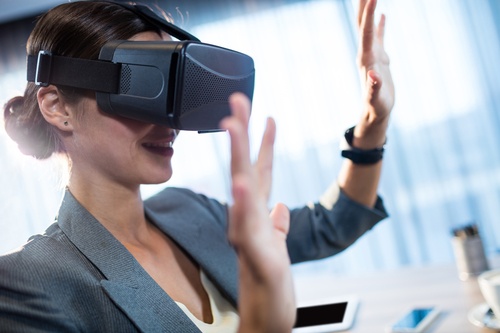Organizational rules that disallow a smart phone to be available on person during the clinical day eliminates the opportunity for many clinicians to utilize technology.

My cell phone and iPad are readily available for my use during my clinic days. Amazing applications have influenced my practice: from wellness apps that motivate patients to be physically active to apps that provide safe and challenging balance activities for patients. I also have apps that help me immediately know lab values and their meaning and apps that help me know the sensitivity, specificity and likelihood ratios of clinical tests. Smart phones are quite the amazing resource.
Truth be told, I am wrestling with virtual reality. I have played with a system and I can see opportunity for clinical value. I’m a bit of a germaphobe – well, not really a strong germaphobe – but on a practical, reasonable side of it. Wearing devices means that I need to ensure that I’m not cross contaminating patients. I’m really not sure the best way to ensure cleanliness between patients when it comes to virtual reality.
What excites me is that there are fun and cheap ways to challenge patients through the use of virtual reality. Maybe we’ll all need to have a cheap supply of ski caps in the clinic in the future as a way to ensure cleanliness between patients?
You’ll find the abstract to the recent study below.
Smartphone virtual reality to increase clinical balance assessment responsiveness.
Abstract
OBJECTIVE:
To determine if a low cost smartphone based, clinically applicable virtual reality (VR) modification to the standard Balance Error Scoring System (BESS) can challenge postural stability beyond the traditional BESS.
DESIGN:
Cross-sectional study.
SETTING:
University research laboratory.
PARTICIPANTS:
28 adults (mean age 23.36 ± 2.38 years, mean height 1.74 m ± 0.13, mean weight 77.95 kg ± 16.63).
MAIN OUTCOME MEASURES:
BESS postural control errors and center of pressure (CoP) velocity were recorded during the BESS test and a VR modified BESS (VR-BESS). The VR-BESS used a headset and phone to display a rollercoaster ride to induce a visual and vestibular challenge to postural stability.
RESULTS:
The VR-BESS significantly increased total errors (20.93 vs. 11.42, p < 0.05) and CoP velocity summed across all stances and surfaces (52.96 cm/s vs. 37.73 cm/s, p < 0.05) beyond the traditional BESS.
CONCLUSION:
The VR-BESS provides a standardized, and effective way to increase postural stability challenge in the clinical setting. The VR-BESS can use any smartphone technology to induce postural stability deficits that may otherwise normalize with traditional testing. Thus, providing a unique relatively inexpensive and simple to operate clinical assessment tool and∖or training stimulus.
{{cta(‘c6ecd159-44e1-4eb3-9940-fbb5cb2761d5’)}}

Leave a Reply